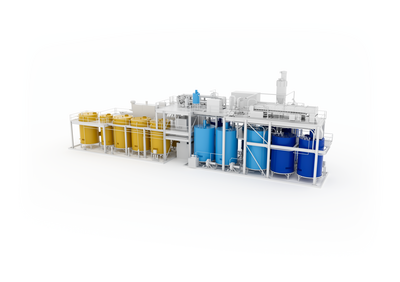Waste-to-Energy : Digital solutions for fly ash recycling

The software and technology leader Emerson is helping Swedish cleantech company HaloSep optimise its unique process that converts hazardous flue gas residues from waste-to-energy plants into valuable materials. The control technology and software from Emerson will be used at HaloSep's Plant for Optimisation, Research and Technology (PORT) in Gothenburg, Sweden, to manage an innovative chemical separation process that recovers valuable salts, metals and minerals from fly ash. As an alternative to landfill, the HaloSep process enhances the sustainability of the waste-to-energy industry.
Save fly ash from landfill
Recovering materials from challenging waste streams is an important contribution to greater circularity. There are more than 2,600 waste-to-energy plants worldwide with a disposal capacity of approximately 460 million tonnes of municipal waste per year. Approximately 2-5 per cent of the incinerated waste becomes a flue gas residue known as fly ash, which is a hazardous material containing contaminants such as heavy metals, chlorides and sulphates. Millions of tonnes of fly ash are currently transported to landfills by truck, rail or sea, which is both costly and unsustainable.
"Due to the irregular nature of household waste, fly ash produced from incineration has varying properties requiring different separation processes. Our PORT plant will analyse fly ash samples from around the world, test specific separation processes and demonstrate circular economy benefits to potential customers,” said HaloSep president Staffan Svensson.

Technology for safe an efficient operation
Emerson designed and implemented a scalable control system architecture for the PORT facility and worked closely with HaloSep to develop unique separation sequences to recycle fly ash with variable composition efficiently. Emerson's DeltaV™ distributed control system ensures the safe and efficient operation of the separation processes. In addition, DeltaV Live software provides a powerful human-machine interface for operators, with metric-driven dashboards for intuitive reporting and management, supporting optimised decision-making and operational performance.
HaloSep, a subsidiary of Stena Metall Group, provides an on-plant solution that can be built on-site at a waste-to-energy plant or placed at sites where fly ash from smaller plants is consolidated, eliminating long-distance transportation costs and emissions.
